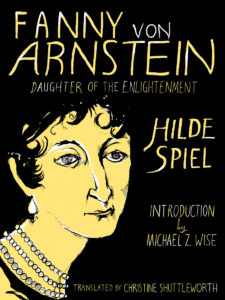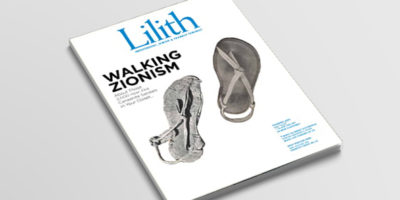“Salon Jewesses.” Just How Acceptable Were These “Fair Hebrews”?
The salonnières, those upper-class women who hosted salons for philosophers and poets in late-eighteenth and early-nineteenth century Europe, offer fertile ground for probing women’s history. Equal parts moderator, mediator, and hostess-with-the-mostest, these women cultivated the essential Enlightenment-era art of sociability. Of course there were limits to their ability to please their contemporaries: The French philosopher Jean Jacques Rousseau complained to D’Alembert, “In society they do not know anything although they judge everything.”
The rise of the salonnières coincided with the period of Jewish emancipation between 1789 and 1815, during which Central European Jews gained incremental civil rights. As a result, a relatively high proportion of Jewish women — Henriette Hertz, Rahel Levin-Varnhagen, and Dorothea Mendelssohn among them — were poised to play this role.

But any nostalgia for this period is tempered by the cautionary tale presented by HildeSpiel in Fanny von Arnstein: Daughter of the Enlightenment, a biography first published in 1962 now republished in a new translation (New Vessel Press, $19). Born in Berlin in 1758, Fanny von Arnstein was largely responsible for exporting the salon concept to Vienna. Daughter of a financier to King Frederick II of Prussia and wife of a Viennese banker, von Arnstein used her musical talent (Mozart frequented her salon) and education (she was tutored on Moses Mendelssohn) to cultivate a hospitable, cultured, and social environment in her home.
Unfortunately von Arnstein left behind no published works, which presents a challenge for historians, as Michael Z. Wise observes in his excellent introduction. This absence of source material is felt throughout the book. Fanny von Arnstein was a gifted musician, spoke several languages, and socialized with royalty, diplomats, and literati, but wrote only a scant few letters. So how can a biographer measure the impact of her achievements?
Spiel relies heavily on the portraits of others, including that of Joseph von Sonnenfels, whom Spiel calls the “Moses Mendelssohn of Vienna,” and those of the diplomat Karl August Varnhagen von Ense, whose admiration of von Arnstein is evident in his frequent descriptions of her as “a tall, slim figure, radiant with beauty and grace.” Not all were so admiring. An advisor to the Austrian diplomat Metternich, Friedrich Gentz, who was known to call Rahel Varnhagen “little Levy” behind her back, was just as spiteful towards the Arnsteins. That Fanny von Arnstein can be grasped only through the gaze of others — as the striking cover art by Liana Finck conveys — underscores the fear of women’s historians that the salonnières may not have been intellectual principals but rather docile agents who enabled conversations in which they played no substantive part.
Gentz’s double talk raises the book’s other central question: just how much was this “fair Hebrew” accepted? Von Arnstein benefited from the reign of Joseph II, the liberal Austrian ruler who abolished serfdom and brought new optimism to the land. In the weeks before he passed his famous Edict of Tolerance of 1782 that would grant limited rights to the Jews, von Arnstein was rumored to have appeared before the Emperor “like Esther before Ahasuerus.”
But the Napoleonic Wars of 1805–1815 changed the circumstances for Jews who relied on their embodiment of French culture to permit their acceptance in Central European society. Napoleon’s invasion stirred nationalism in the German lands. To prove their loyalty, the von Arnsteins assisted wounded Austrian soldiers and financed the anti-French uprising in Tyrol. When the Congress of Vienna concluded and the boundaries of Europe were redrawn, Fanny von Arnstein retreated to Baden in failing health. Sadly, at the last minute, the Congress denied Central European Jews full emancipation.
Fanny von Arnstein was caught in the double bind of being Jewish and being female. Arnstein’s solution to her dilemma — what Spiel calls “The Third Solution” moving “half in the Jewish and half in the Christian world” — was really no solution at all. As Spiel admits, it “would have been so perfect that it could not be carried out: like every other idea since the beginning of time.”
The shadow of the postwar period in which Austrian novelist Spiel wrote those words looms over her entire work. When her translator (who is her daughter), Christine Shuttleworth, describes the Jews from the Dutchy of Austria as being “deported” to Poland in the fifteenth century, one wonders if this is an anachronistic translation or portends the ominous turn history would take. Writing from Vienna where she returned after the war, Spiel repeatedly suggests that her von Arnstein biography presents a “parable.” Was the Esther of Vienna the maker of her own fate? As a woman? As a Jew? This rich tale leaves the reader to contend with the many dilemmas of her life, and their meaning for our own time.
Emily J. Levine is the author of Dreamland of Humanists: Warburg, Cassirer, Panofsky, and the Hamburg School, just out in paperback from the University of Chicago Press.



